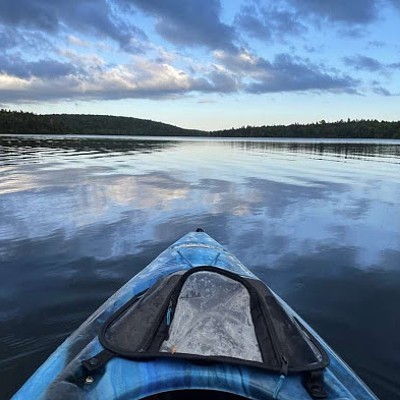A greenbelt is starting to form around the edge of the city and that's a good thing.
That near-urban wilderness, with its many lakes and vast forests, is something that makes Halifax such a great place to live. Want to go for a hike in the woods? No problem. Want to go for a swim in a remote lake and be the only one there? Check. Want to venture out to the shore and sit on a rock and watch the waves without having to jump over a fence or skirt around a no trespassing sign? Consider it done.
In fact, I'm willing to bet that many of us have our own favourite little places to go to get away from the busy streets and sidewalks of the city, especially in summer.
For me, it's a place called the Birch Cove Lakes. It's only about five kilometres from downtown Halifax, or about two kilometres from Rockingham where I grew up, and I can go for a really great wilderness hike actually inside the old city limits of Halifax. Nine of the lakes in this area are arranged in a big loop, so it's possible to take a canoe from one lake to another, and through a few meandering streams, and end up right back where you started without ever having to backtrack.But here's the bit that might, or might not, come as a surprise. The city has done nary a thing to protect this incredible natural asset we have. Sure, baby steps here and there, a new map maybe, and a promise to do something down the road, but nothing substantive enough to actually protect the wilderness near the city or to control the expensive problem of suburban sprawl.
By contrast, it's actually the Nova Scotia government that's stepping up. Earlier this month, the province added an additional 7,000 hectares of land to the system of parks and protected areas near the city. That's equivalent in size to roughly 100 new Point Pleasant Parks.
It includes a 465-hectare expansion to the Birch Cove Lakes wilderness, so that the protected area now reaches all the way from Clayton Park to Tantallon and crosses the headwaters of two watersheds. The province also created a 1,177-hectare protected area at Pockwock Lake that conserves some really great old forest, but also helps protect the city's drinking water supply.
The Nova Scotia government also created the Rogues Roost protected wilderness area, conserving over 18 kilometres of public coastline on the Chebucto Peninsula. At 1,193 hectares, the new park contains ample opportunity for coastal hiking and sea kayaking, and is kind of like Peggys Cove, but without all the tourists.
It also established a 631 hectare nature reserve in the Sackville River watershed that will help protect the river. This follows the creation of the 283 hectare Sackville Lakes Provincial Park earlier this year. The biggest expansion was to the existing Waverley-Salmon River Long Lake protected wilderness area, where 3,228 hectares were added to the park, including the shorelines of over 20 lakes.
If you look at a map of the city now showing the new parks, you can start to see a greenbelt forming around the urban core of the city. This, thanks to the many community groups and volunteers who have pushed for the protection of these important places over so many years, and to the Nova Scotia government who actually listened to their concerns.
Meanwhile, the Halifax Regional Municipality continues to twiddle its thumbs and do practically nothing to contribute to the provincial and community efforts to protect wilderness near the city, even though the municipality has everything to gain by reigning in the problem of suburban sprawl. The city has largely dismissed the call to add greenbelting to the HRM regional plan. Sure, there is some window-dressing in the five-year review, but it's mostly about renaming the status quo and calling green strips between houses and businesses a greenbelt. That's hardly a plan.
The greenbelt that was established around Toronto several years ago was created by provincial legislation and has been a success on multiple fronts. Perhaps it's time for a similar approach to be taken in Halifax, because leaving it up to the municipality just ain't working out.
Chris Miller is the National Conservation Biologist for the Canadian Parks and Wilderness Society and a proud Haligonian. Follow him on Twitter @NSwilderness.
Send your essay ideas for consideration to [email protected]

















